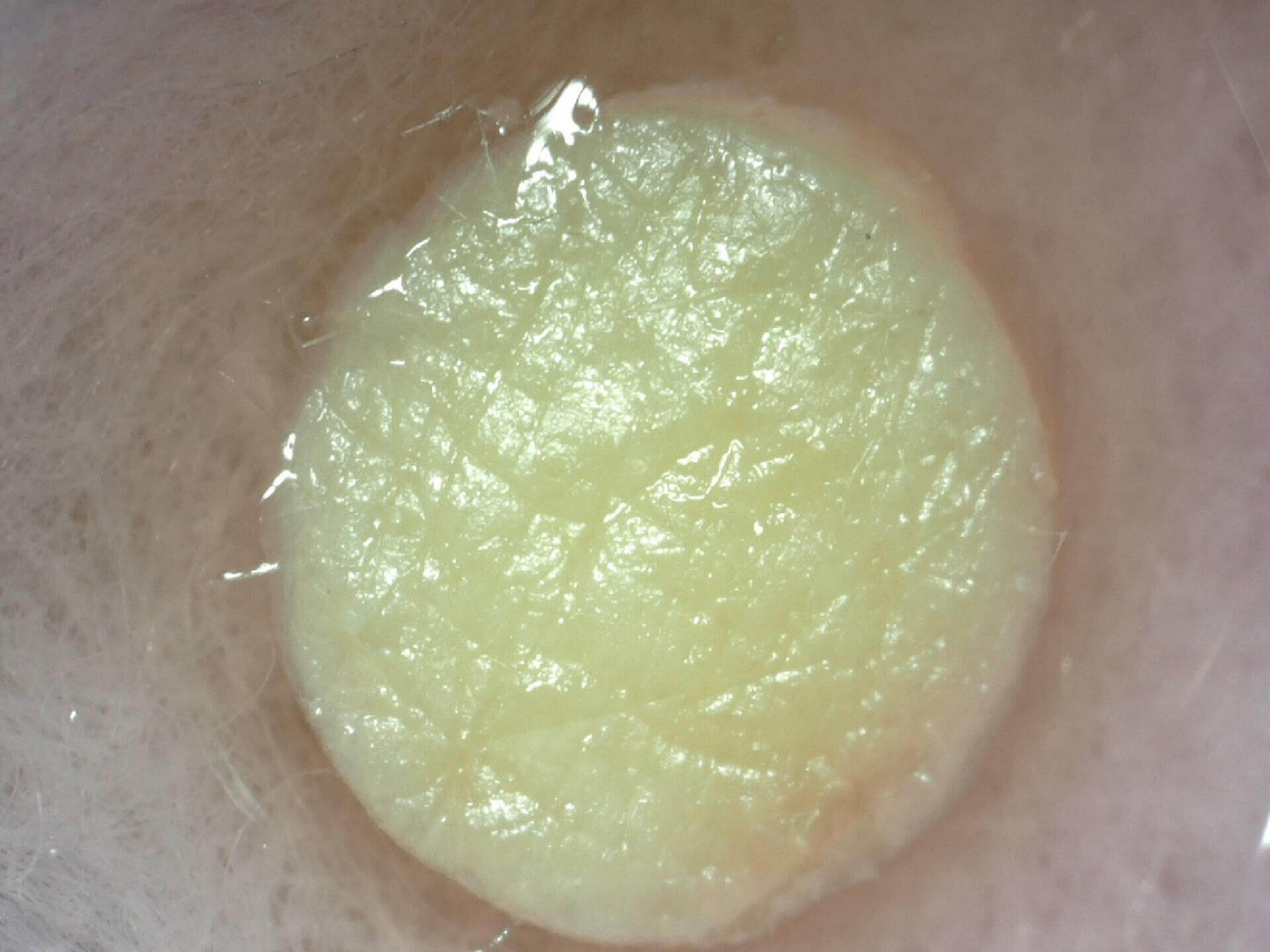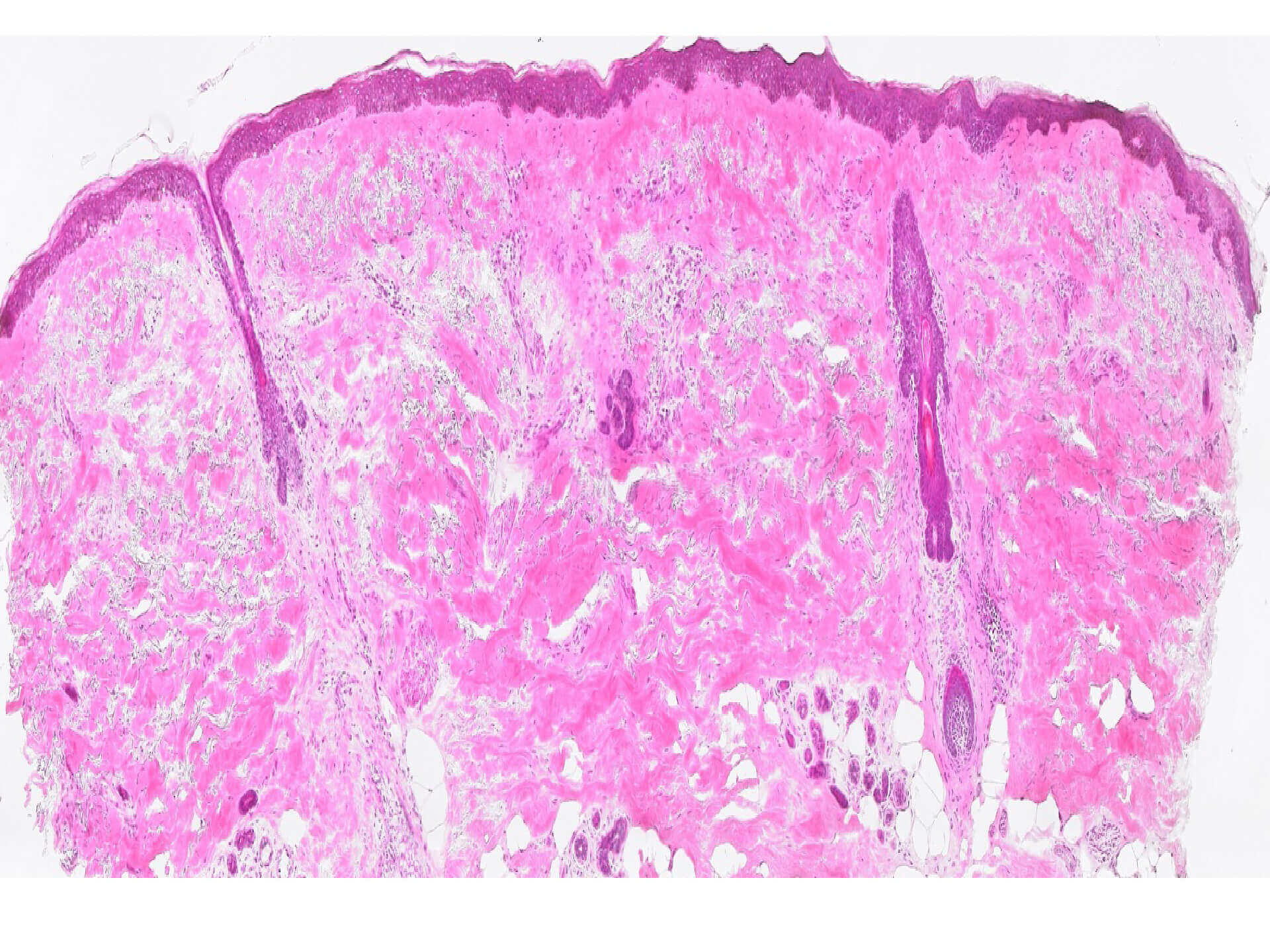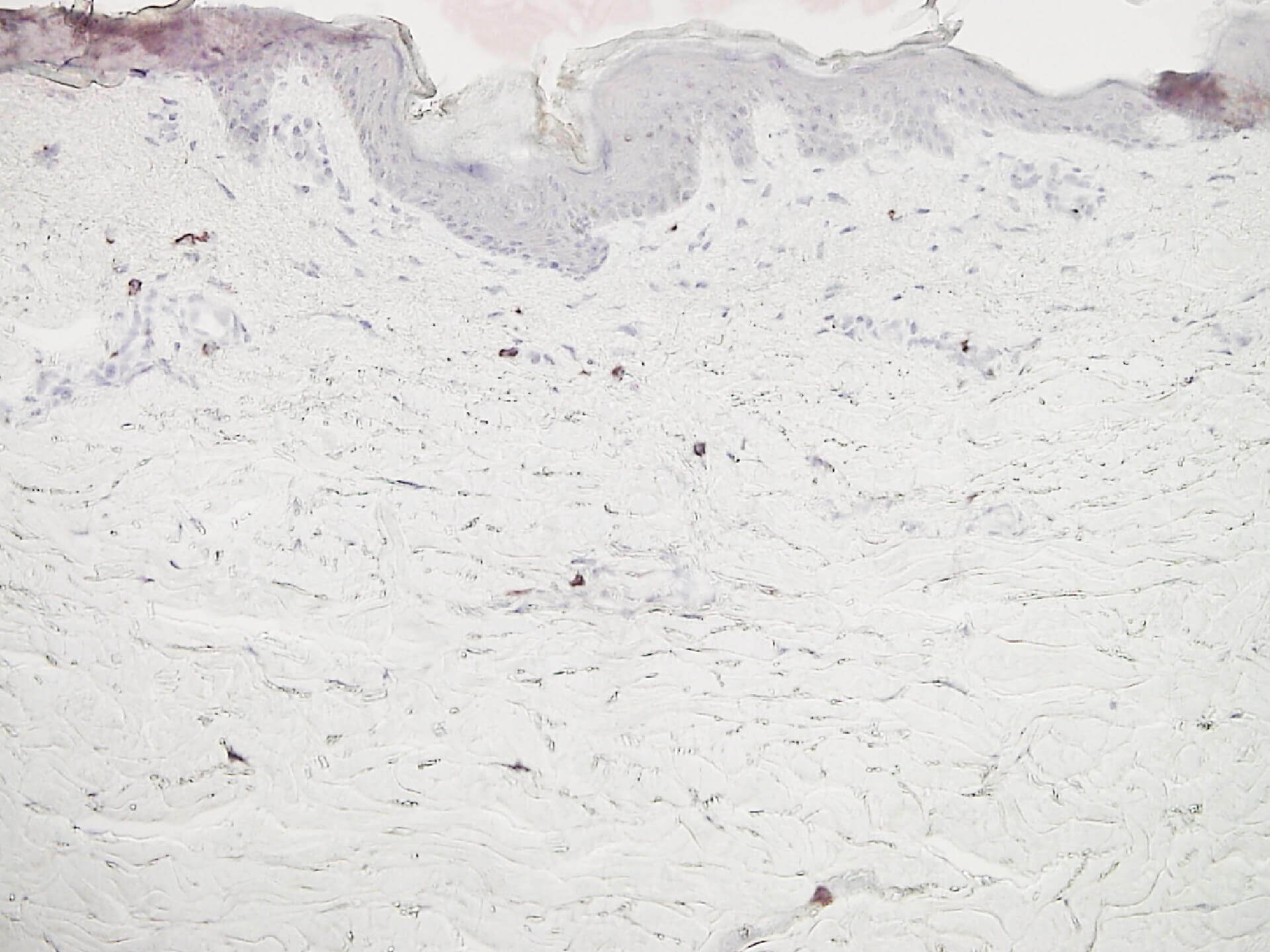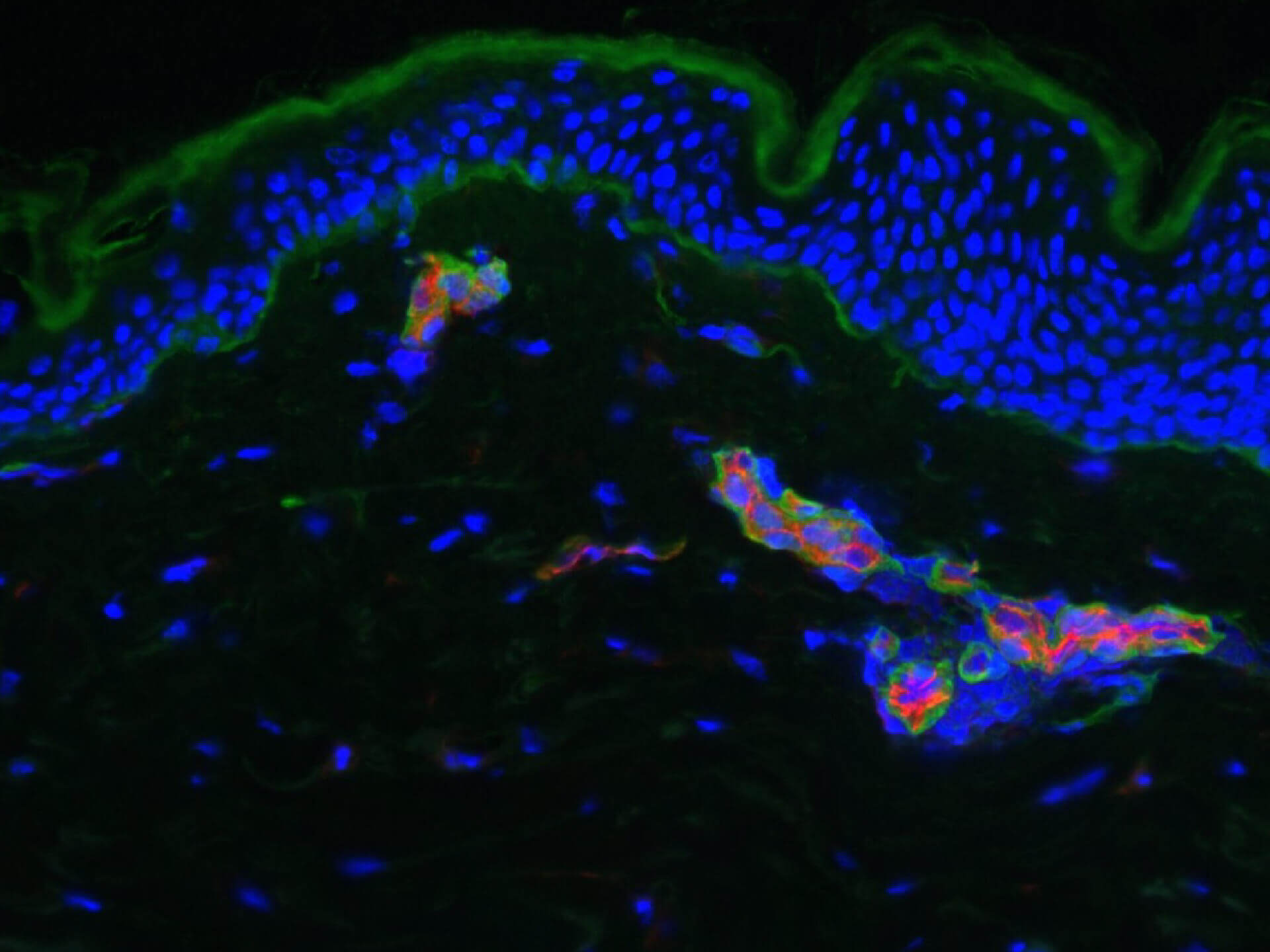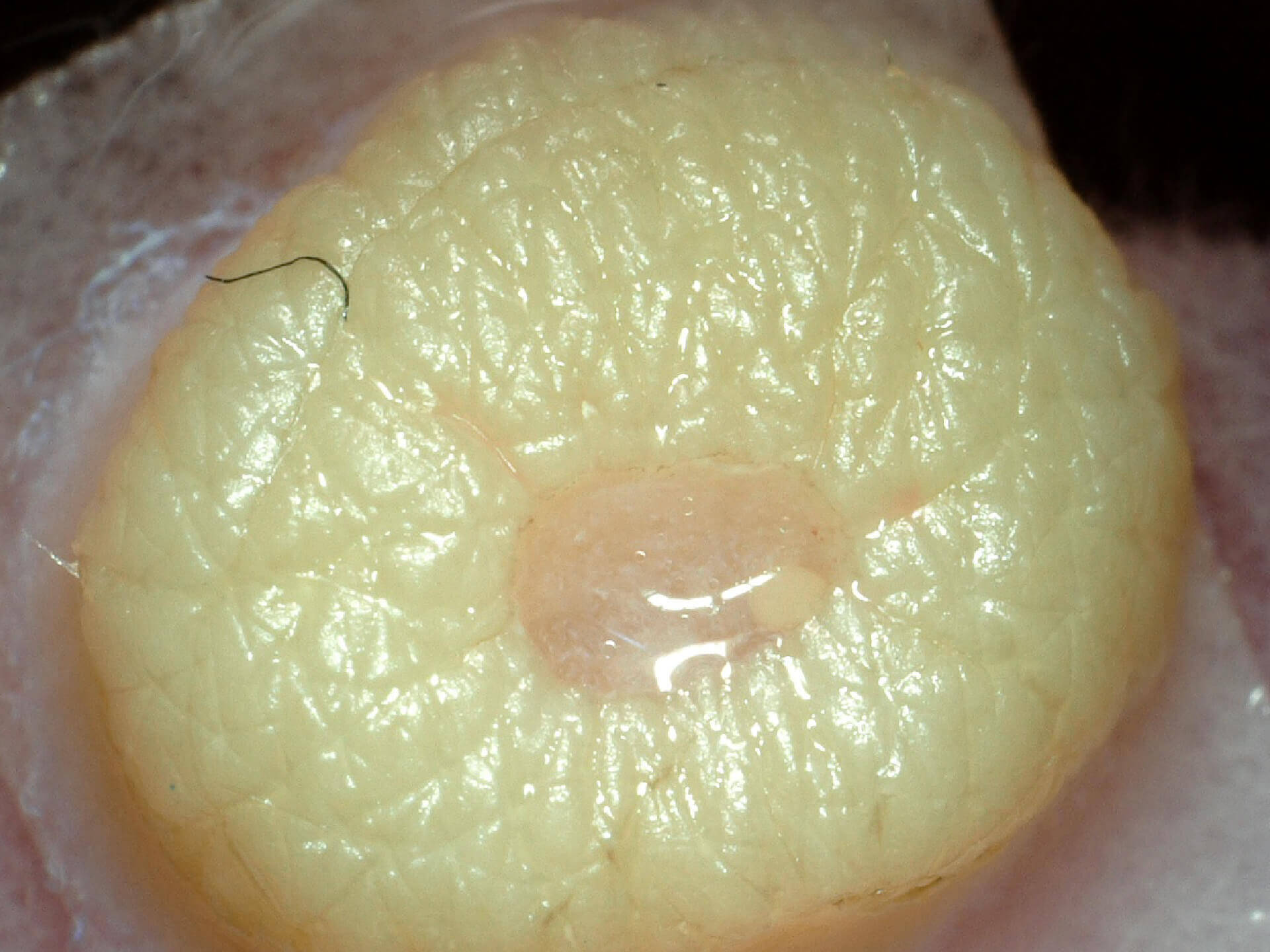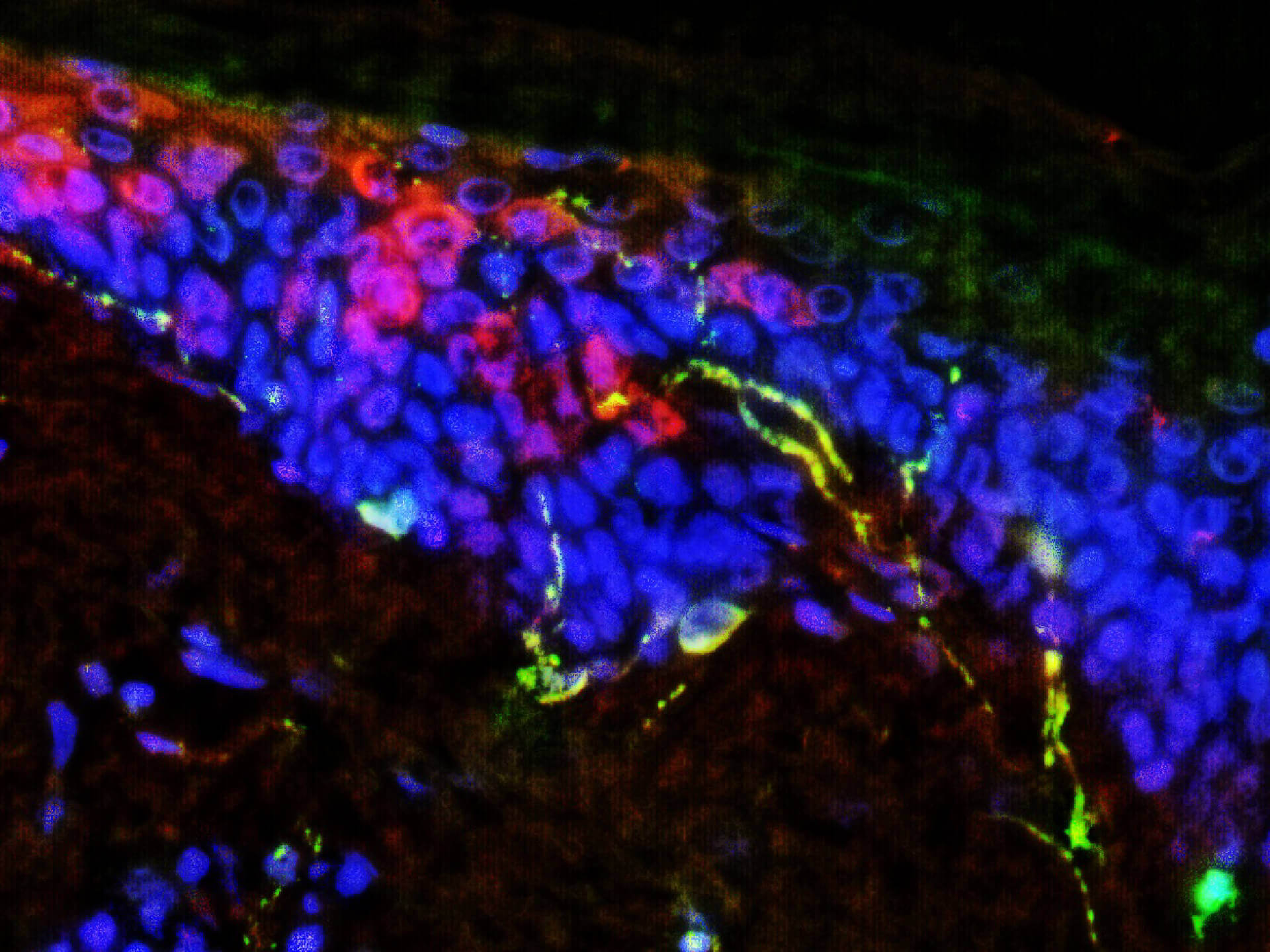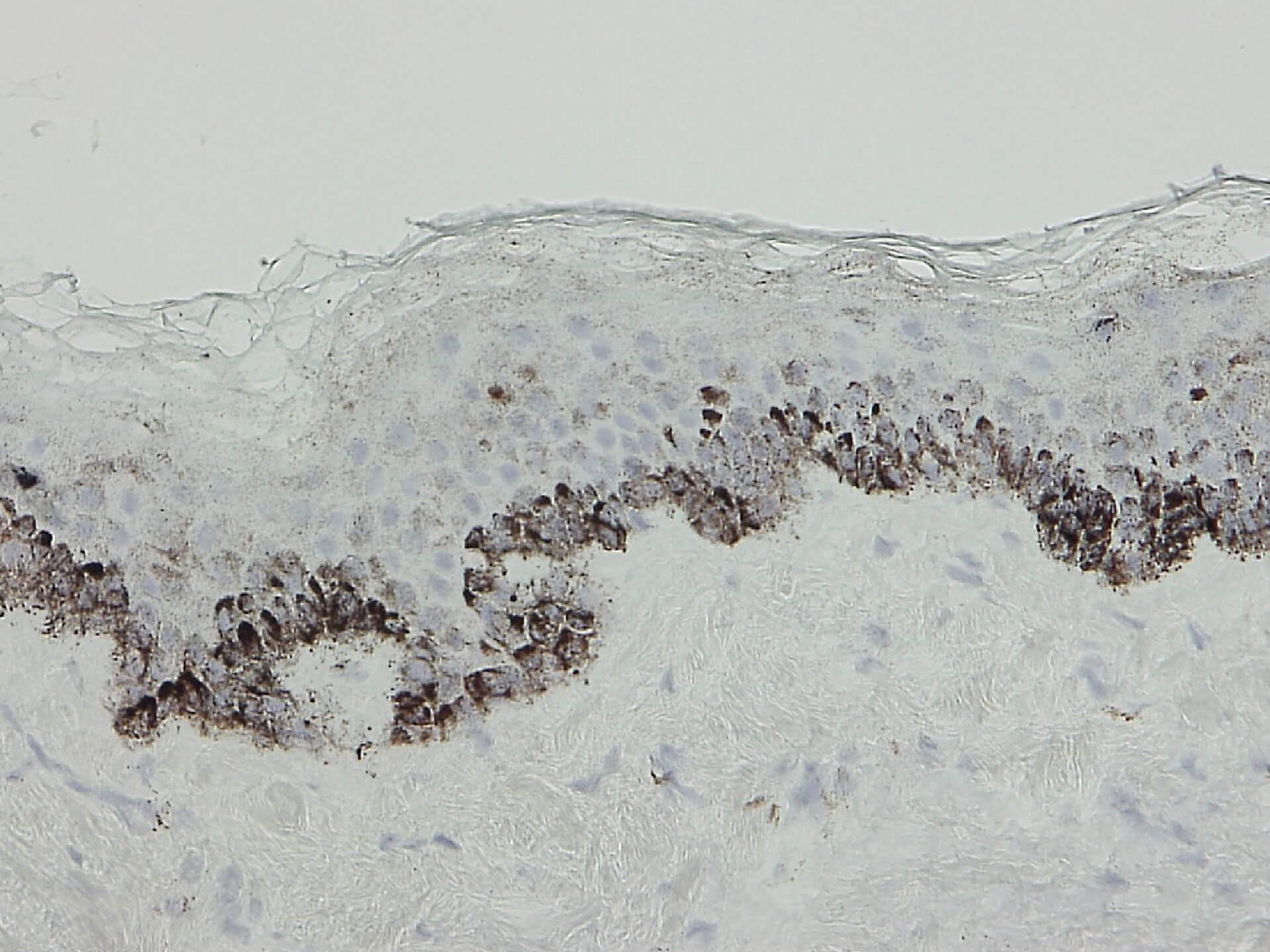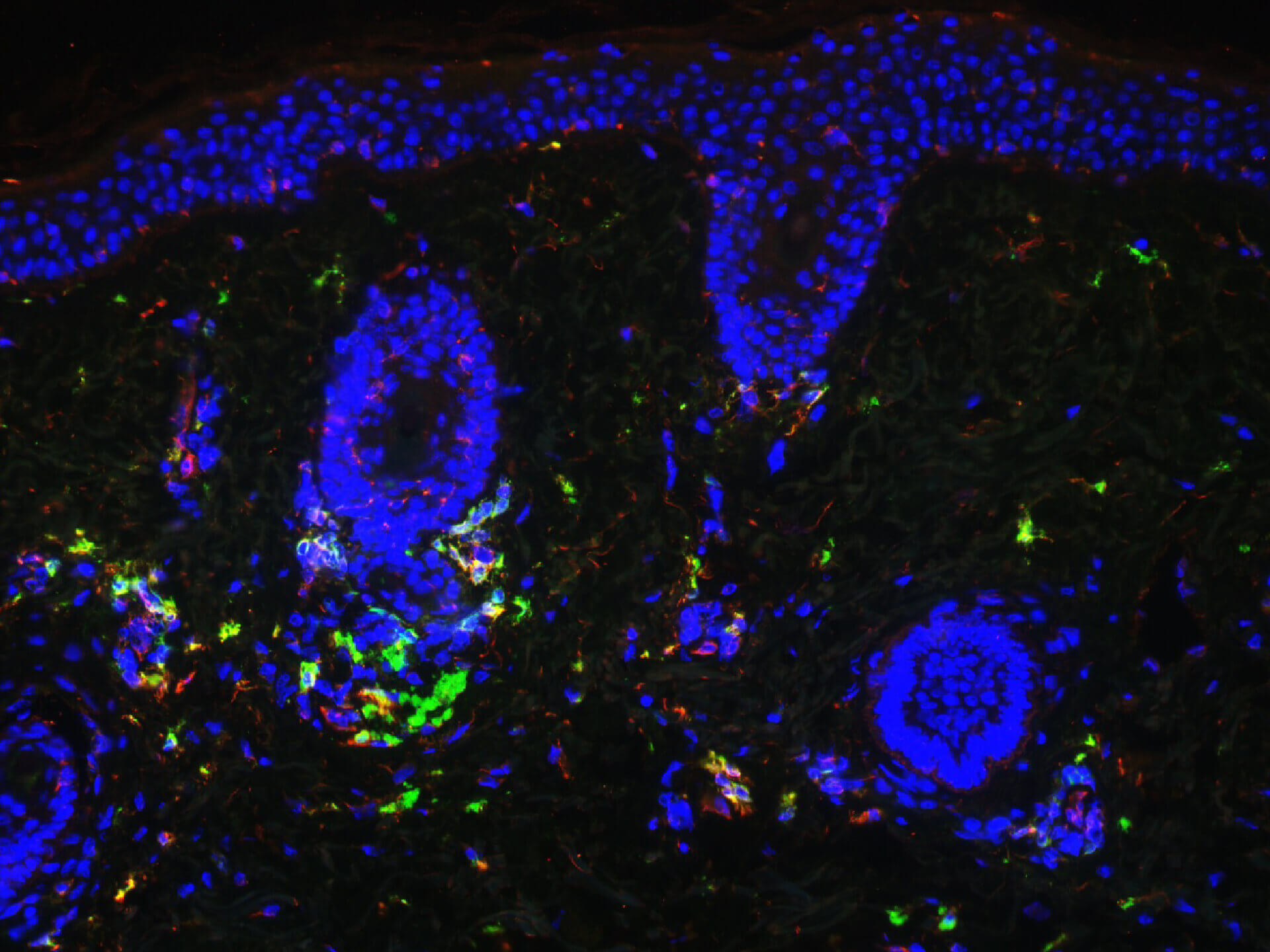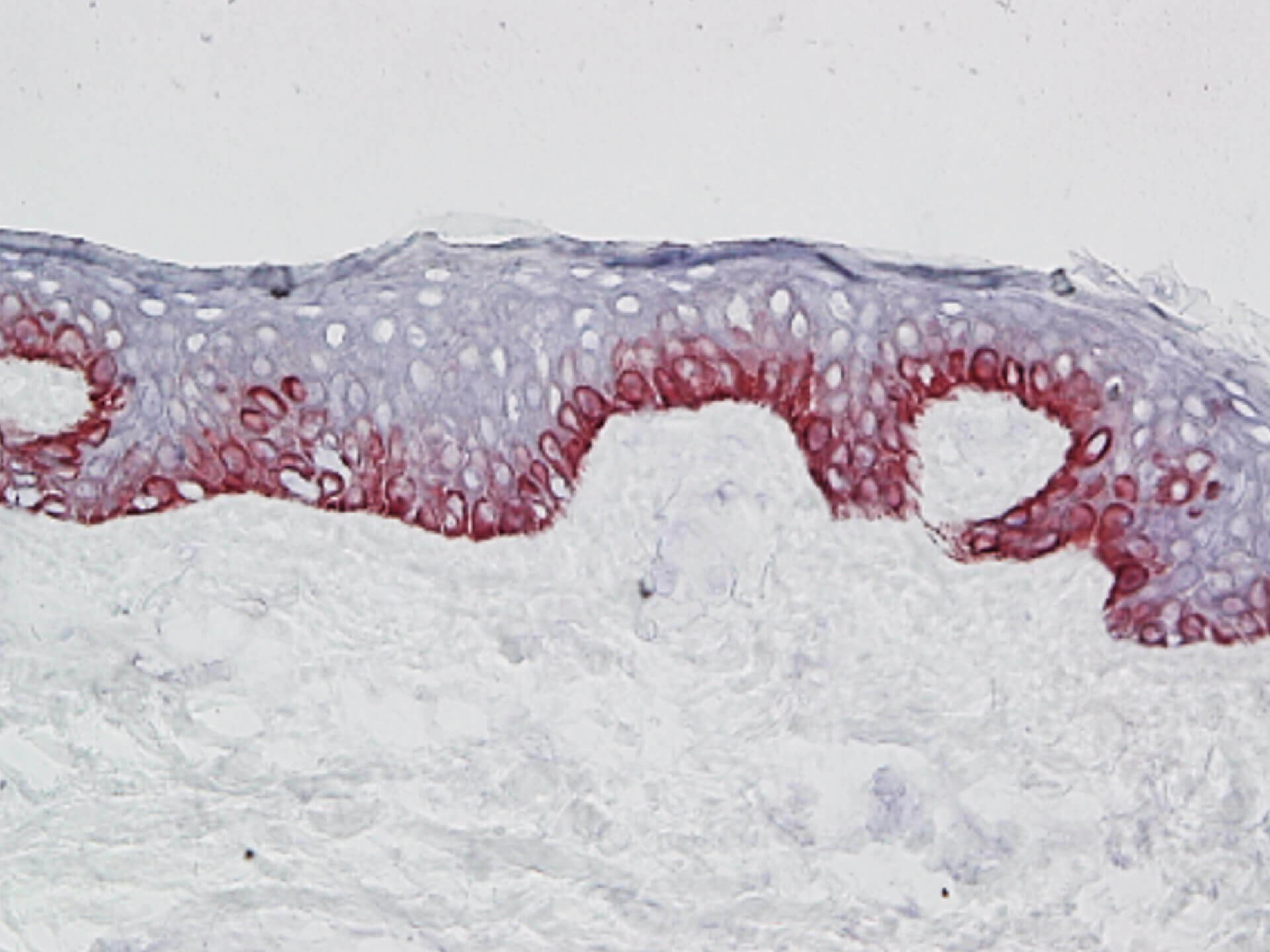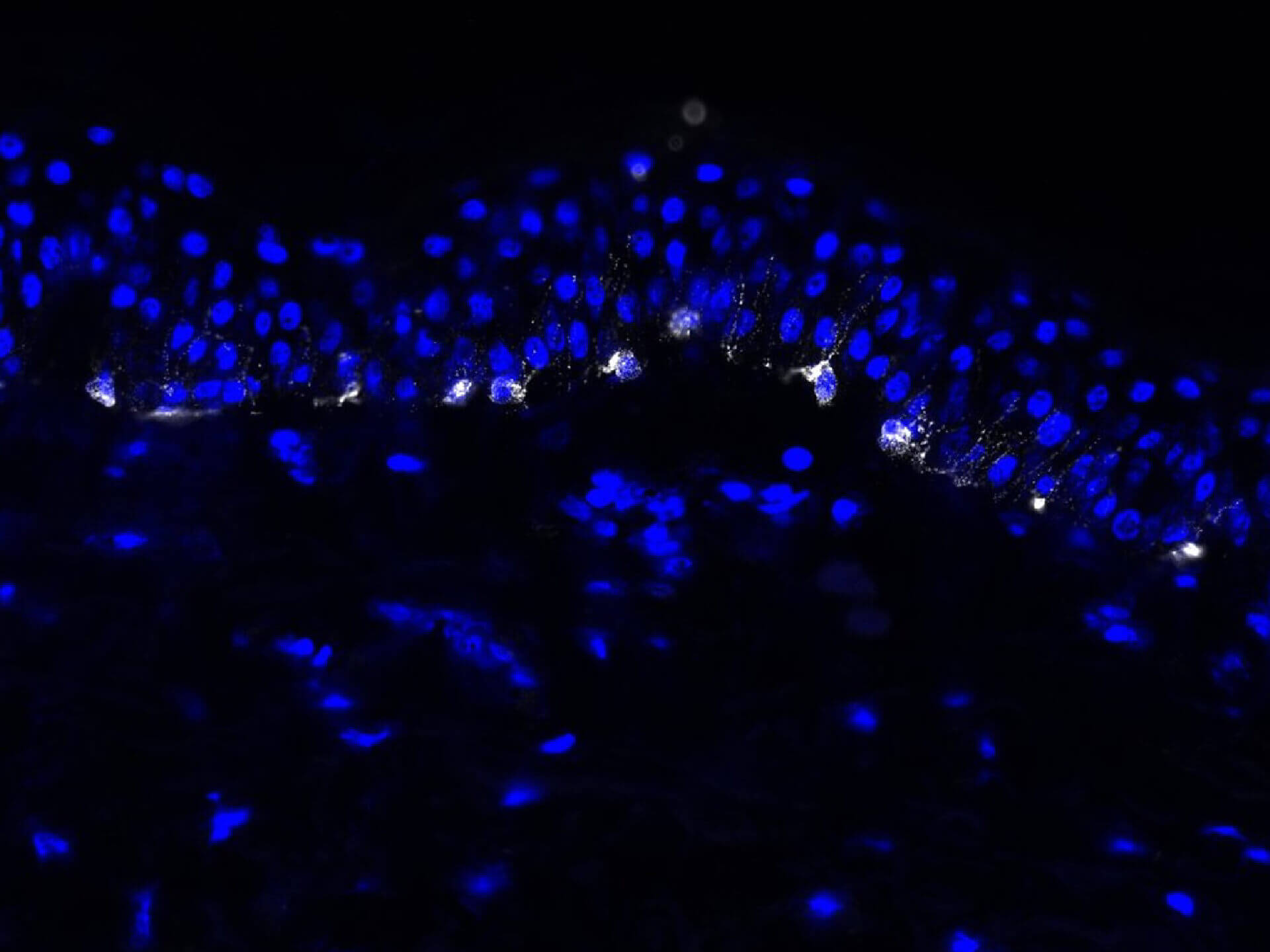Human skin organ culture
Our assays are based on the ex vivo culture of skin samples (including scalp skin) in serum-free medium and allows the investigation of skin responses after exposure to exogenous and endogenous modulators or cells, environmental stressors, and test agents, which can be added to the medium (mimicking systemic delivery), injected intradermally (mimicking intradermal delivery), or directly onto the epidermis at the air-liquid interphase (mimicking topical agent application).
We have long-standing expertise, documented in several publications, in performing various analyses for investigating skin responses, such as skin pigmentation, inflammation, epithelial-mesenchymal transition, neurogenic inflammation, aging, barrier, and many more. Building upon this ex vivo assay, we specifically offer also a human skin wound healing assay, a completely human re-innervation skin model, human inflammatory skin disorders-like models, in addition to the culture of lesional skin ex vivo.
Note: The intact skin barrier is preserved during skin culture.
Human skin wound healing model
Our model is fully suited to study human skin regeneration using acute and pathological wound healing assays. Check our expertise in wound healing.
Human skin re-innervation model
Our model is fully suited to study the interaction of nerve fibers and skin cells and can be used to evaluate the effects of test agents in protecting skin from sensitive or neurogenic inflammation. It is completely humanized, as it uses human skin and human iPCs-derived neural progenitors. Check our expertise in neurobiology.
Models that mimic human skin inflammation
Our models imitate specific inflammatory responses ex vivo, such as atopic dermatitis, psoriasis, alopecia areata, by using a serum-free medium and selected cocktails of cytokines that allows the survival of skin samples and targets skin-resident immune cells. These models are optimal for investigating whether test agents prevent or rescue skin from inflammation.
Human lesional skin organ culture
Thanks to our extensive clinical network, we have access to skin biopsies from patients affected by skin disorders. The culture of lesional skin provides a unique opportunity to investigate the protective effects of test agents prior to initiating a clinical trial.
We combine gene expression profiling (qRT-PCR or RNAseq) with in situ evaluation of protein, mRNA expression, and activities (immuno-histomorphometry, in situ hybridization, in situ zymography) in a single experiment, along with in vitro analysis using culture medium (e.g. cytotoxicity and cytokine secretion assays).
We are also eager to share our expertise in revealing how test agents, exogenous and endogenous modulators or cells, environmental stressors, or new targets affect skin responses by performing functional mechanism of action assays by employing specific agonists, antagonists, neutralizing antibodies, or targeted gene silencing (siRNA). By using cutting-edge techniques, our assays are ideal also to investigate which skin-associated cell population, even at the single cell level, specifically respond to the treatment.
Selected publications
Edelkamp et al., 2023, Sevilla et al., 2023, Keren et al., 2023, Wikramanayake et al., 2022, Chéret et al., 2021, Chéret et al., 2021, Post et al., 2021, Alam et al., 2020, Chéret et al., 2020, Post et al., 2020, Gherardini et al., 2020, Oláh et al., 2020, Chéret et al, 2020, Luengas et al., 2020, Chéret et al, 2020, Bertolini et al., 2020, Zang et al., 2019, Liao et al., 2019, Cheret et al., 2019, Imanishi et al., 2018, Vidali et al., 2016, Meier et al. 2013, Lu et al., 2007
Quick Connect
Get in touch with us for inquiries and more information

